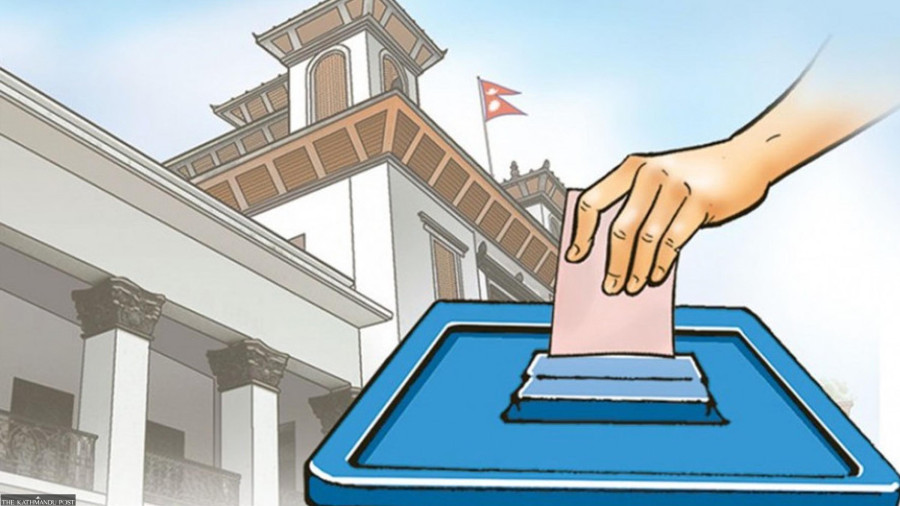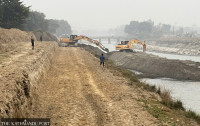National
Eighty-four parties apply to contest November elections
Twelve parties have formed four groups to fight the elections under four different poll symbols.
Binod Ghimire
There are more political parties that will be contesting the upcoming elections for the House of Representatives and seven provincial assemblies than in the local elections held on May 13.
A total of 84 parties have applied at the Election Commission seeking its approval to contest the general elections to be held on November 20 though 116 parties have been registered to it.
Political parties that have already been registered at the Election Commission need to register again every time ahead of elections. As many as 79 parties had got approval to contest the local elections. However, only 65 participated.
“We have received applications from 80 parties to contest the elections for the House of Representatives and provincial assemblies,” Shaligram Sharma Poudel, spokesperson at the commission, told the Post. “We will publish the list of qualified parties after going through their applications.”
Eighty-eight political parties had applied at the Election Commission to contest the federal and provincial elections in 2017.
The commission will call the parties to submit the needed document if they are incomplete before granting them permission.
Tuesday was the last day for parties to register at the commission for general and provincial elections.
A meeting of the commission on July 5 had asked political parties wishing to contest the November elections to get registered from July 7 until Tuesday.
The commission also sought applications from the parties that are planning to contest under a single election symbol.
Poudel said twelve parties have formed four groups to contest the elections under four different election symbols.
Section 49 of the Act Related to Political Parties says two or more than two parties willing to contest under the same election symbol can apply jointly at the commission. There shall be only one parliamentary party led by the party winning the highest numbers of seats, according to the Act.
CPN (Maoist Centre) and Nepal Samajbadi Party on Tuesday applied to contest under the same election symbol. The Baburam Bhattarai-led Nepal Samajbadi Party will contest under the “hammer and sickle within a circle”, the symbol belonging to the Maoist Centre.
Bhattarai’s party had “eye” as its election symbol when it was registered at the commission on February 17.. Bhattarai had contested the 2017 elections with the same eye symbol from the Naya Shakti Party and won from Gorkha-2.
“We have decided to contest under the election symbol of the Maoist Centre,” Bishwadeep Pandey, chief of the publicity department of Bhattarai’s party, told the Post. “The seat-sharing, however, is yet to be decided.”
Former CPN-UML leader Bamdev Gautam, who has registered Nepal Communist Party Unity National Campaign, too has reached an agreement with the Maoist Centre to contest the elections under the Maoist symbol.
However, Gautam didn’t apply for a common election symbol.
Gautam had registered his party on July 28, just a week before the government announced the election dates. All the lawmakers who won from Bhattarai’s and Gautam’s parties will have to follow the whip of the Maoist Centre. Gautam had lost the 2017 elections from Bardiya-1.
Similarly, other fringe parties too have decided to contest the polls under a single symbol. Samajbadi Kendra Nepal, Adhunik Nepal Samajabadi Party and Nepal Communist Party Rastrabadi too will contest under a single symbol. Samajadi Ekta Party, Nepal Communist Party Samajbadi and Nepal Dalit Party too are contesting under one symbol. The other parties contesting under one symbol are Nepal Aama Party, Nepal Janabadi Party, Nepal Sachet Party and Nepal Sushan Party.
Hridayesh Tripathi and Brijesh Gupta had won the 2017 election for the House of Representatives under the UML’s symbol. Though Tripathi formed Janata Pragatisheel Party in March before the local elections, Gupta has joined the UML.
The commission will start the election process once the party registration process completes, according to Surya Aryal, assistant spokesperson at the commission. As per the election schedule published by the commission, it will allocate the election symbol for proportional representation on August 31.
Similarly, the parties will have to submit the closed list of candidates under the proportional representation on September 18 and 19. The final list of the candidates under the category will be published on October 8.
The commission is preparing to start the election process for the first-past-the-post system from October 9.
From the 2017 elections, five parties were awarded national party status. Any party that wins at least one seat under the first-past-the-post system and has a minimum of three percent seats under proportional representation system qualifies as national party.
Currently six parties are national parties in Parliament. Along with the UML (98), the Nepali Congress (61), and Maoist Centre (49), CPN (Unified Socialist) (23), Janata Samajbadi Party (19) and Loktantrik Samajbadi Party (13) too are national parties.




 16.12°C Kathmandu
16.12°C Kathmandu















